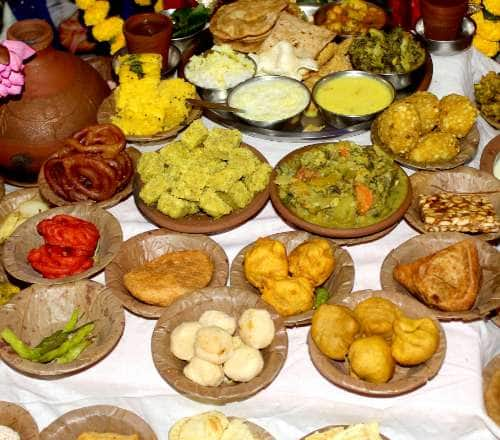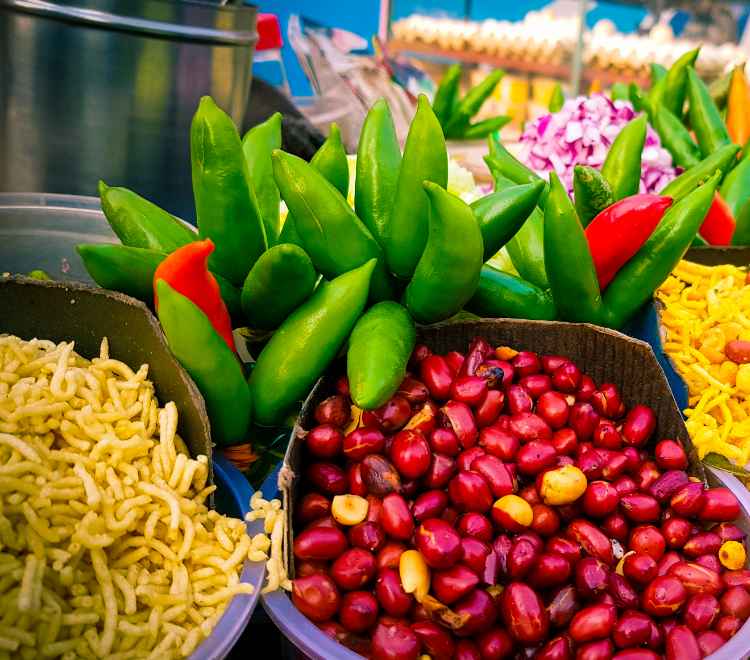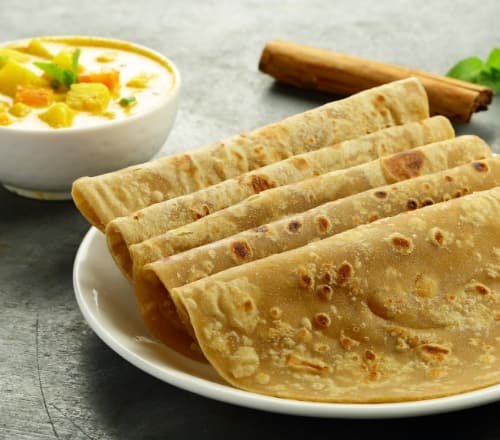Stay logged in to proceed with bookings, orders and offers.
On changing the terminal, you will loose items in your cart. Are you sure you want to change your terminal?
Discover a tantalising blend of Tamil and Marathi cuisines.
If you have ever relished your idli by dunking it into a piping bowl of sambar, you must have thanked the Tamilians. They gave the world this wonderful curry that elevates everything from idli, dosa, and medu vada to even steamed rice. But did you know a part of this gratitude should also go to the Maharashtrians? The origins of sambar can be traced back to the Thanjavur Maharashtrians, a microscopic community that not many know of. Legend has it that when the Maratha ruler Sambhaji Rao, the eldest son of Chhatrapati Shivaji, came to Thanjavur in Tamil Nadu, he missed his beloved amti dal. This dal is made using kokum, which lends it a tangy flavour. But it was difficult to source kokum in the country's southern reaches, so tamarind was used as a stand-in. This simple switch gave birth to the popular sambar we know and love today.
This little story also highlights a community that brings together two rich cultures—Tamil and Maharashtrian. Thanjavur Maharashtrians are a small but mighty community that take great pride in their heritage and cuisine. When Venkoji Bhonsle, Chhatrapati Shivaji’s half-brother, moved to Thanjavur to rule the ancient city, many Maharashtrians followed suit. Over the years, as they integrated into the local community, they borrowed from Tamil cuisine and added a few of their own flavours. This developed a distinctive new culinary culture. Every family in this community has their tweaks and tricks for the recipes, but all the dishes beautifully marry Tamil and Maharashtrian flavours. Rice forms the focal point of Thanjavur cuisine. But what they do with this humble grain takes it to another level of deliciousness. There are chutneys, sauces, curries and gravies galore to be savoured with the rice. And on hot days, spice powders (podi) are mixed with ghee rice and eaten with yoghurt or yoghurt-based curries for cooling meals.
Come evening, the rice is tossed with spices and vegetables to make a simple one-pot meal. A good example of this one-pot meal is Vangi baath, or brinjal rice, often made using leftover rice of the day and is spiked with a home-ground masala mix and slices of brinjal. My mother-in-law tops this with roasted peanuts to add a satisfying crunch to every bite. Sometimes, the brinjal is substituted with tendli or capsicum or potato, depending on what’s available in the pantry. It's a different world of textures, spices and techniques, similar to Tamil cooking, but with a few surprises and secrets. In every family, the matriarch, or ajji, dictates and supervises flavour, spice level and blend. And they produce mind-blowing food that is a harmonious fusion of some (or all) tastes that make a satisfying meal—sweet, sour, salty, bitter, pungent, and astringent.
Ask anyone from Thanjavur about packaged masalas like chilli powder, coriander powder or pepper powder, and they’ll most likely turn their noses up at it. The hallmark of Thanjavur's regional food is freshly roasted and ground masalas, just the way their grandmothers did it. It is usually the first step in most recipes. Before long, the aroma of coriander seeds, dried red chillies and coconut wafts through the house, signalling that meal time is near. The other incredible thing about Thanjavur cooking is that it's simple but clever. Boring vegetables are brightened up with interesting pairings, and pantry staples are quickly whipped up into a delicious feast. Take, for example, ambat bhaji, which uses locally-available sorrel greens. The sour leafy vegetable is cooked along with dal, fenugreek seeds, dried red chillies and a bit of tamarind to liven it up. This curry is served with rice and a unique urad dal pachadi (raita). Urad dal is roasted and ground into a fine powder, which is then whisked into yoghurt and tempered with curry leaves, asafoetida and dried red chillies. Each bite, combined with this pachadi, is an explosion of flavours and textures in your mouth. Another comforting but ingenious dish is the kootu (curry), which combines dal and local, seasonal veggies into one dish. A tempering of crunchy bits of urad dal and crispy curry leaves transforms the dish into a wholesome and delicious meal.
Goddu Pitla Bring the taste of Thanjavur into your home with this easy recipe, the perfect example of a delicious dish using simple ingredients. Goddu pitla features on the weekly menu of every home and for good reason. This is a dish I crave when I return home after a long stretch of travelling and eating outside. Many people eat goddu pitla with steaming rice, but we mix the rice with a chutney and dip morsels into the pitla—a match made in heaven! Ingredients (For pitla) 20 pearl onions 2 tbsp sesame oil 1 tsp coriander seeds ½ tsp sesame seeds ½ tsp fenugreek seeds ½ tsp whole peppercorns ½ tsp urad dal 4-5 dried red chillies (pick as per your spice preference) 10 curry leaves 1 tsp dry coconut (can be substituted with fresh coconut) 1 tsp mustard seeds A pinch of asafoetida 1 tbsp rice flour 1 tsp turmeric powder Salt to taste Tamarind pulp (lemon-sized) (For chutney) 1 cup tur dal 6-7 dried red chillies 1 cup fresh coconut, grated 1 tbsp sesame seed oil Salt to taste
Heat 1 tsp of sesame oil in a pan and add the coriander seeds, sesame seeds, fenugreek seeds, peppercorns, urad dal, dried red chillies, four or five curry leaves, and dry coconut. Roast the mixture well and allow it to cool before grinding it. In the same pan, heat the remaining sesame oil. Add the mustard seeds, the remaining curry leaves and asafoetida. Let it splutter. Add the onions and sauté well. Now add the tamarind pulp (to extract the pulp, soak tamarind in warm water for some time and then squeeze out the pulp. Strain it to get rid of the fibres and seeds.) Let the mixture boil for a minute, and add salt, turmeric powder and ground masala. Let it boil for a few minutes until the smell of raw tamarind disappears. Now mix the rice flour with a bit of water and add this to the pitla to give it some body. Let it simmer for a little while until it thickens slightly. For the chutney, heat 1 tbsp of sesame oil in a pan and add the tur dal and dried red chillies. Roast well, taking care not to let the dal turn black. Once cooled, blend this in a mixie with the grated coconut, salt and a sprinkle of water. The chutney should ideally be on the thicker side but not too dry. Once done, add a tempering of mustard seeds, curry leaves and asafoetida on top.
Take a serving of steaming rice and add a dollop of chutney on top of it. Mix it well with your hands. Now dip a morsel of this into the puddle of pitla and enjoy! Recipe courtesy Girija Rajan.





The Adani One expressly disclaims all liability, direct and indirect, in respect to actions taken or not taken based on any or all the contents of this Blog. The Blog is an opinion of the contributor based on the collation of data from various sources and is provided only for information purpose. Adani One does not canvass, advertise, solicit, invite or induct for any product, merchandise, information, brand or any other materials mentioned in the Blog, nor does it obtain any monetary benefit from the same. Reader is advised to read and apply his/her intellect and discretion in this regard. Any Intellectual Property mentioned in this blog belongs to the rightful owner. We do not intent to claim any interest over the same.